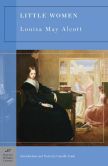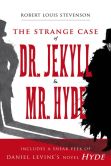
Review of The Legend of Sleepy Hollow by Washington Irving
Overview from www.barnesandnoble.com: The story is set in 1790 in the countryside around the Dutch settlement of Tarry Town (historical Tarrytown, New York), in a secluded glen called Sleepy Hollow.
The "Legend" relates the tale of Ichabod Crane, a lean, lanky and extremely superstitious schoolmaster from Connecticut, who competes with Abraham "Brom Bones" Van Brunt, for the hand of 18-year-old Katrina Van Tassel, the daughter and sole child of a wealthy farmer, Baltus Van Tassel. Crane, a Yankee and an outsider, sees marriage to Katrina as a means of procuring Van Tassel's extravagant wealth.
My Review:
In honor of
the fact that many people here in the USA will soon celebrate Halloween, I have
chosen a book, or rather a story, which reflects the Halloween mood. The Legend of Sleepy Hallow is of course
a classic favorite. It has been so long since the last time that I read it that
I wrongly assumed that it was a novel instead of a short story.
Still, I have
always loved it. It is a great story which seemed unique to me from the first
time I read it. The style of the writing is much more in the period of the time
yet I have found it much easier to read than many of the works of Charles
Dickens.
One of the
most obvious ways that it differs from modern stories is that three main
characters emerge (or perhaps four if you include the headless horseman as a
character as well). The first one is the one that I remember most—one Ichabod
Crane. Mr. Crane is a local school teacher who is attempting to settle down in
the area where he now lives when the story opens. In life he loves chiefly two
things: food and girls. However he also hopes to improve his wealth with his
latest pursuit of a local young Dutchwoman whose father owns a great deal of
land.
The next main
character is naturally the young lady herself. Her name is Katrina and she is
described as attractive as well as plump. Boy how times have changed. She is
also apparently quite a catch since many of the local bachelors have all tried,
more or less unsuccessfully, to court her. She always keeps them guessing
though.
Our final
character is one Brom Bones who is also one of Katrina’s suitors. He is nearly
the complete opposite of Crane. While Crane is the thin and scholarly type,
Bones sounds more like what we would now call a jock. He is a big, burly sort
of guy, or at least that’s how I had always pictured him.
In our story,
Sleepy Hallow is haunted by one Headless Horseman. Brom Bones himself has
boosted of nearly beating the horseman in a horse race. He claims that the same
horseman disappeared as he passed a bridge otherwise he would have one. It is
this claim that later leads to Crane’s own disappearance in connection with the
same horseman.
Overall, this
is still a great story. I enjoyed reading it. I think I could read it over and
over again and not get bored. I try to imagine what really happened to Ichabod
after I finished reading it. Last time I was trying to figure out who the
horseman was. I still wonder about that but now I wonder more about Ichabod.
What happened to him? Where is he now? Think about the next time you visit an
isolated wooded area and keep a look out for the Headless Horseman.





